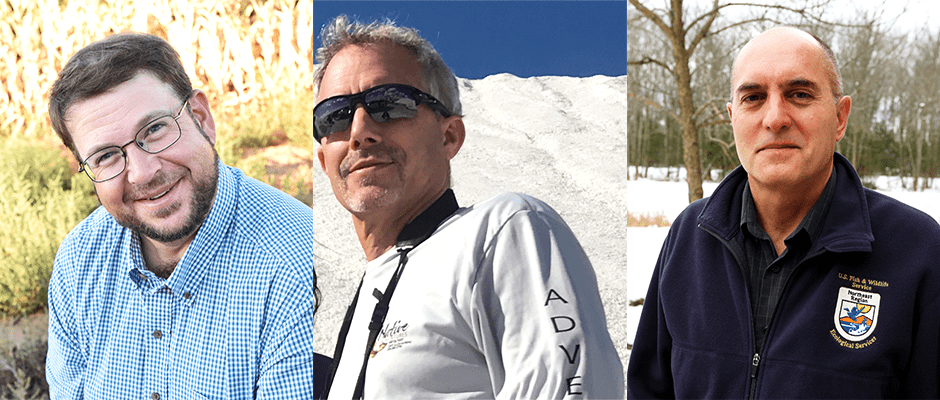Share this article
USFWS staffers honored with Science Awards
The U.S. Fish and Wildlife Service has recognized three staff members for their extraordinary work by awarding them the Service’s 2017 Science Awards.
The Science Awards were established to recognize that effective wildlife management and conservation is founded on innovative scientific inquiry and principles. They are awarded to recognize the outstanding efforts of the agency’s scientists and technical staff.
Biometrician Matthew Butler received the 2017 Rachel Carson Award for Exemplary Scientific Accomplishment, which recognizes scientific excellence through the rigorous practice of science applied to a conservation problem. He received the award for his work for whooping cranes and lesser prairie-chickens, helping ensure that the most appropriate, best available, high-quality scientific and scholarly information is available to advance stewardship for these species.
Butler led the development of an improved and peer-reviewed survey protocol for whooping cranes. He also conducted a population viability analysis, determined that juvenile recruitment most His contributions are steering management toward habitat protection along the Texas Gulf Coast and refocusing research toward understanding the declines of whooping crane recruitment on breeding areas in Canada.
For lesser prairie-chickens, Butler led a team that developed aerial survey techniques that have provided population estimates, new lek locations and areas to target for monitoring and conservation. This information informs on-the-ground conservation by identifying how energy development can be steered away from places favorable to lesser prairie-chickens.
Bill Uihlein, Region 4 assistant regional director, science applications, received the Sam D. Hamilton Award for Transformational Conservation Science, which recognizes innovative application of science. By stressing collaboration, Uihlein has been working to ensure landscapes in the Southeast can sustain populations of fish and wildlife range-wide at desired levels in the Southeast.
He helped unite conservation leaders from 15 state and 13 federal agencies in the Southeast Conservation Adaptation Strategy, which has helped federal, state, nonprofit and private organizations focus on common goals by using science to design and achieve a connected network of habitats and waters.
Region 5 Division of Endangered Species Chief Martin Miller received the Science Leadership Award, which recognizes supervisors who champion science in conservation decision making and empower their staff to accomplish scientific work and engage in the scientific community.
Miller was recognized for demanding the highest quality scientific work from himself and his team and for his dedication to ensuring the best science is appropriately applied to Endangered Species Act decisions, whether it is a listing determination, a habitat conservation plan or an ESA consultation with another federal agency. Colleagues lauded him for empowering his team to “be science leaders” and participate in the scientific community through collaborating with other scientists, serving as peer reviewers, serving on graduate committees, presenting at scientific conferences and authoring scientific publications.
The Service received 35 nominations for the awards.
The U.S. Fish & Wildlife Service is a Strategic Partner of The Wildlife Society.
Header Image: U.S. Fish and Wildlife Service staff members Matthew Butler, Bill Uihlein and Martin Miller received the Service’s 2017 Science Awards. ©USFWS








